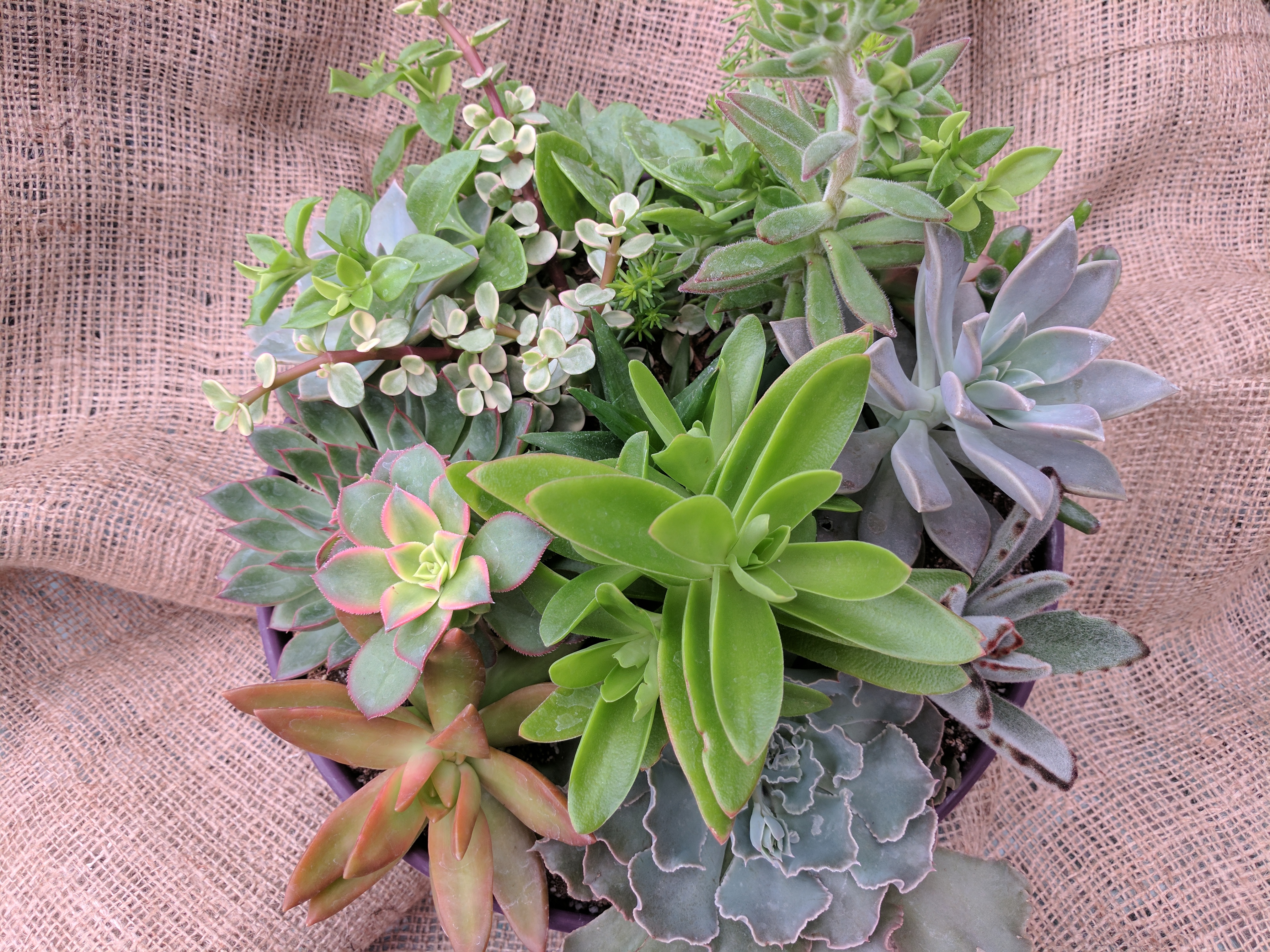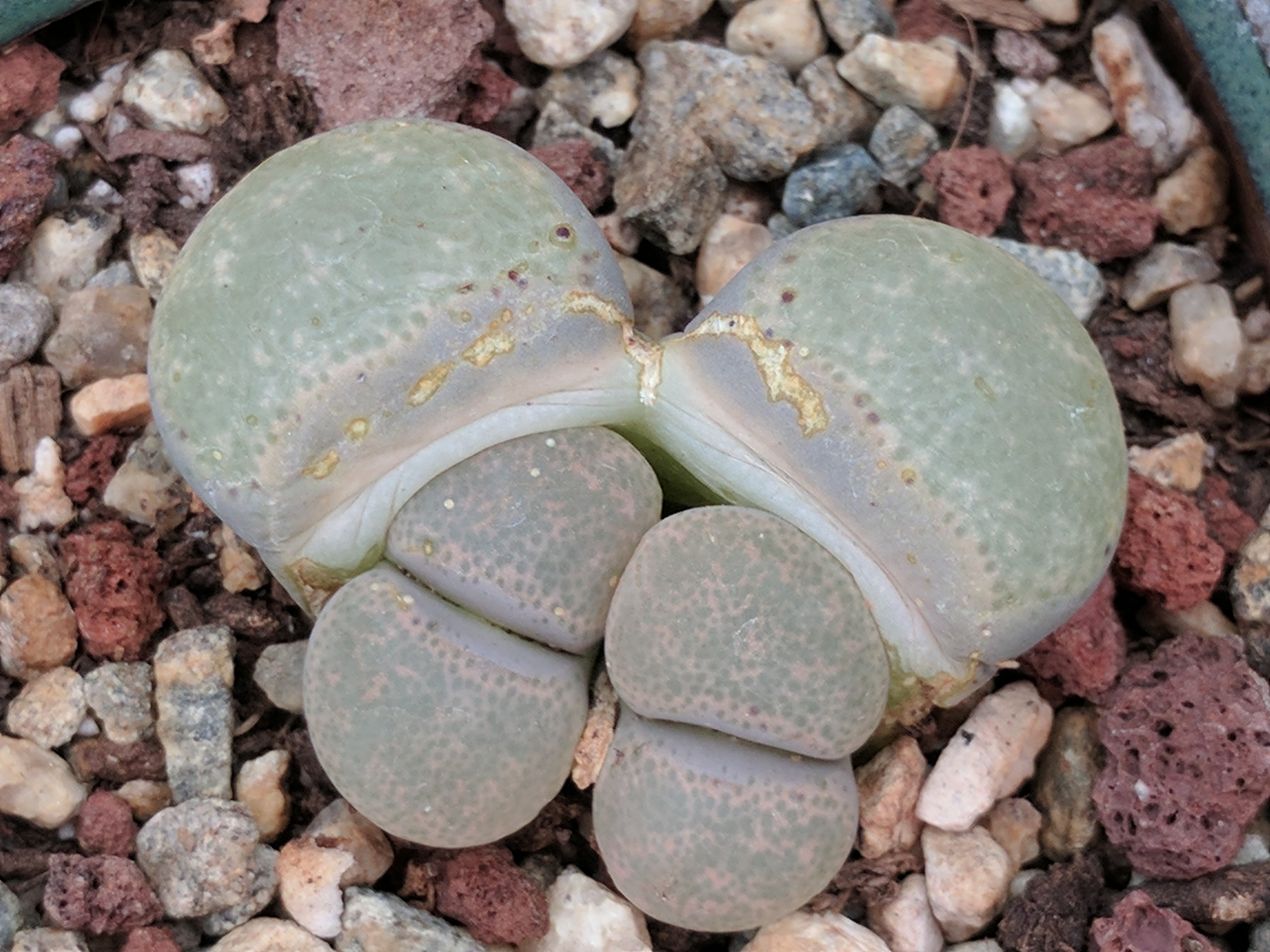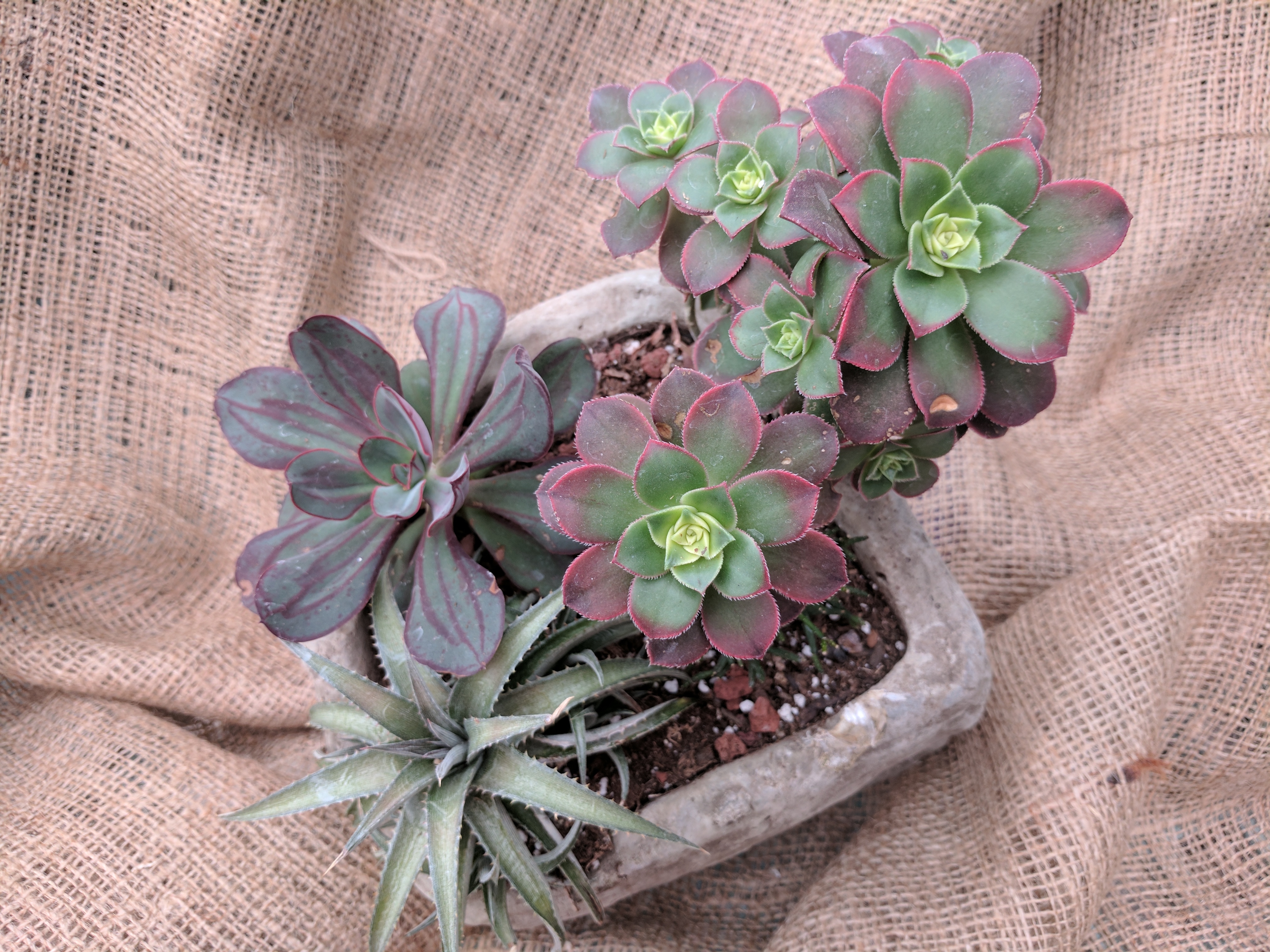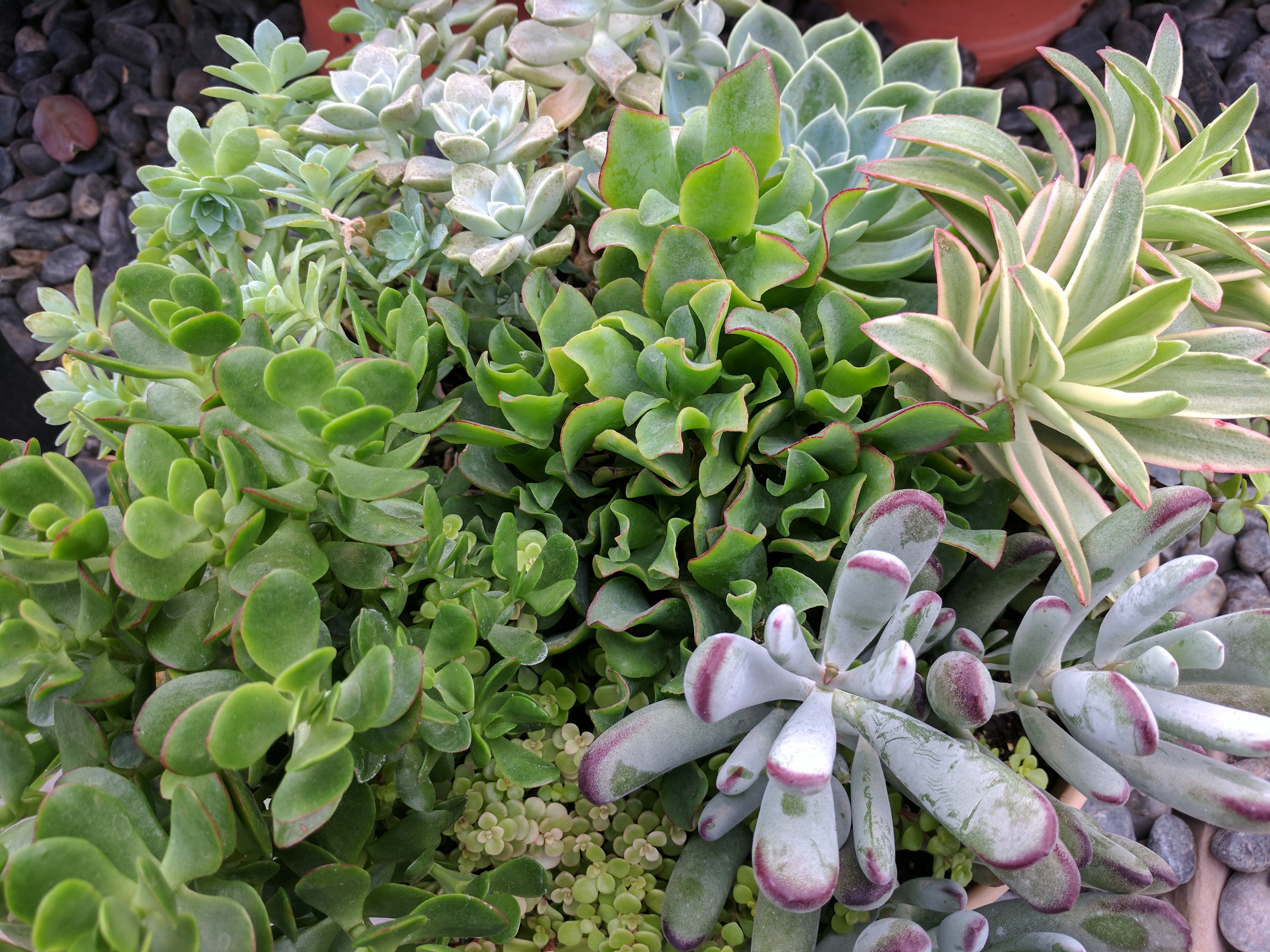“Gardens” don’t have to be big or bold or full of flowers to be eye-catching. Succulent dish gardens are proof of that. And judging by the response to the succulent gardens in Tagawa’s Houseplant Department, our guests are right in line with the growing popularity of these small but beautiful living arrangements.
What is a succulent?
Succulents are plants that hold water in their leaves, stems or roots. It’s how they manage to survive in climates where the moisture is inconsistent. But that adaptation is just part of their beauty.
People who love succulents are drawn by their amazing diversity of color, form and pattern. Just a few succulents nestled together in a shallow dish can create a simple but elegant display. Given some protection from our harsh afternoon sun, a succulent dish garden can be right at home on a Front Range deck or patio…. sharing the spotlight with more traditional summer flowers.
Simple beauty
Some succulents are almost other-worldly, and can stand alone in a tiny dish. “Living Stones” is a good example of that. As seen above, these odd little plants look just as their name implies, resembling round, swollen pebbles. I think they’re charming in their simplicity.
Other succulents can get quite tall. Some of them will eventually shed their lower leaves, taking on the appearance of a small tree and holding their leaves well above the soil. I think they look a bit like palm trees at a desert oasis.
Water and light for succulents
Proper watering is usually the biggest challenge for first-time succulent growers. On average, succulents won’t need to be watered more than once every couple of weeks during the growing season… when new growth is visible.
As with all container plants, water your succulent garden thoroughly, until water comes out the drainage holes in the bottom of the pot. Then let the soil dry almost completely before watering again.
A moisture meter from Tagawa’s can help you judge how quickly the plants are taking up the water. Insert the probe one-third of the way into the soil for a proper reading. When the soil at the level is almost gone, apply another good drink at the base of each plant, keeping the leaves as dry as possible.
You certainly don’t want your plants to go so dry that they begin to wrinkle. You want to keep the leaves plump and healthy-looking. But when in doubt about watering, don’t.
Just because succulents usually grow in arid and semi-arid locations, that doesn’t mean they’ll appreciate all sun, all day. Morning sun and later afternoon sun can be ideal, but our strong Colorado sun may burn some succulents. Think in terms of plenty of bright light, but not necessarily harsh light to keep your plants healthy.
Succulents that don’t get enough good light will get long and leggy and look nothing like the sturdy plants they’re meant to be.
Easy on the fertilizer
Succulents are slow-growers by nature… conserving both water and energy. Small amounts of fertilizer can be helpful. Just don’t “push” these plants into growing. Use a general purpose fertilizer (ex: 20-20-20) at half-strength no more than once a month from April to August.
Winter care
Most succulents need to take a time out in the winter to stay healthy. For succulent dish gardens, that means spending the winter indoors in a bright but cool location.
During dormancy, plants will need much less water… perhaps just a few tablespoons over the root systems once a month during late fall and winter. And no fertilizer while they’re trying to “nap.”
A succulent dish garden is well worth trying. Tagawa Gardens hopes you’ll join in the fun!
[coupon couponid=”1133″ name=”Succulents”]








